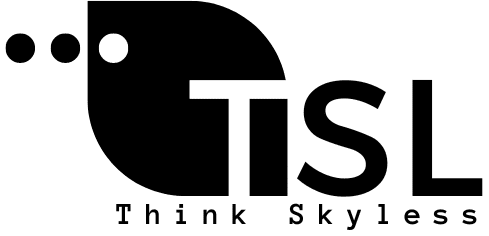
Businesses stand at the precipice of transformation when leadership changes hands. In the dynamic business world, succession mechanisms are pivotal. This article takes you on a journey to unravel two distinct yet potent strategies – Employee Ownership Trusts (EOT) and Management Buyouts (MBO) – as they unfold in the tapestry of business succession.
Deciphering Employee Ownership Trusts (EOT) and Management Buyouts (MBO)
To embark on this exploration, we must first lay the groundwork:
Employee Ownership Trust (EOT):
EOT emerges as a vehicle facilitating shared ownership and management by channeling employee participation through a trust structure. The result? A harmonious synergy promotes commitment, stability, and tax efficiencies.
Management Buyout (MBO):
On the flip side, MBO enters the scene, characterized by incumbent management’s acquisition of ownership with external financing. This maneuver allows the managerial torchbearers to seize the reins.
The Crucial Role of Business Succession Planning
Succession planning is the linchpin that ensures a well-structured blueprint guides the company’s metamorphosis. It functions as the sentinel guarding against turbulence, assuring stakeholders, and fortifying the enterprise’s legacy.
Unpacking the Article’s Scope
This article embarks on a comprehensive journey through the labyrinth of EOT and MBO mechanisms, offering an illuminating perspective. Our trajectory encompasses principles, merits, and live-action tales of both strategies. We’ll also dive deep into the chasm separating EOT from MBO, decode the factors steering the choice between them, and address the thorny patches that business custodians might confront during the succession odyssey.
Embracing Employee Ownership Trusts (EOT)
The nucleus of Employee Ownership Trusts (EOT) is an enigmatic mechanism. Picture this: a trust structure is deployed to surround a substantial chunk of the company’s shares on behalf of the workforce. This transformation redefines the dynamics, ushering in shared responsibility and a democratic decision-making ethos.
Basking in the Radiance of EOT Benefits
Infusing Life into Employee Engagement and Motivation
As EOTs unfurl their wings, employee engagement and motivation are invigorated. Now vested in the company’s prosperity, employees find themselves in a motivational cocoon, resulting in an upswing in productivity and unwavering commitment.
Charting the Course for Long-term Business Stability
EOTs are the custodians of the temple of long-term business stability. The shared vision of safeguarding the business’s heritage propels employees to be the guardians of its resilience and profitability.
Navigating the Labyrinth of Tax Advantages
Tax benefits are a cherished facet of EOTs. Selling the baton to an EOT in certain jurisdictions can unlock favorable capital gains tax treatment for business owners and employees.
You should explore real-world examples to understand how EOTs can be structured and implemented effectively. One such opportunity to explore is the EOT scheme with Price Bailey, which showcases how businesses have successfully leveraged this strategy to empower their employees and ensure long-term sustainability.
Exploring the Maze of Management Buyouts (MBO)
Management Buyouts (MBOs) loom as the incumbent management team embarks on a quest to assume ownership. This transition ushers the incumbent leadership into ownership while keeping the business engine humming.
Navigating the Contrasts and Complexities of MBO
Retaining the Reins of Control
MBOs cast their magic spell by preserving the reins of control within the existing management cadre. The comfort of continuity is their greatest gift.
Wading through the Quagmire of Financing Challenges
However, beneath the surface, MBOs face the formidable challenge of acquiring the necessary capital. Raising external financing becomes a puzzle fraught with intricacies and financial problems.
Gauging the Ripples in Company Culture
Yet, the ripples of change are an inherent risk in MBOs. The new stewards might alter the company’s culture, potentially leading to dissonance.
Deciphering the Crossroads: EOT vs. MBO
Our journey through EOT and MBO reveals a stark contrast in ownership structure, employee involvement, and tax ramifications.
Ownership Structure: The Divide
EOTs weave a tapestry of shared ownership through a trust, while MBOs anchor ownership within the current management elite.
Employee Involvement: Shifting Paradigms
EOTs empower employees with a voice in decision-making, while MBOs place decision-making squarely in the hands of the existing managerial crew.
Anchoring the Best Practices
Assess Your Business’s Readiness:
Before diving into EOT or MBO, thoroughly assess your company’s financial health, culture, and leadership team. Understand your strengths and weaknesses to determine which succession plan aligns better with your current situation.
Engage Key Stakeholders:
Involve key stakeholders, such as senior management and shareholders, in decision-making. Their insights and support are vital for a successful transition.
Legal and Financial Due Diligence:
Consult legal and financial experts to navigate the complex legal and financial aspects of EOT or MBO. Ensure that you comply with all regulations and tax requirements.
Communication Strategy:
Develop a clear and transparent communication strategy for employees and stakeholders. Explain the rationale behind your chosen succession plan and address concerns.
Employee Training and Development:
If opting for EOT, invest in employee training and development programs to prepare them for their expanded roles and responsibilities within the trust structure.
Financial Planning:
Create a detailed financial plan that outlines the funding sources for MBO or the structure of the EOT. Ensure that you have a solid financial foundation to support the transition.
Succession Timeline:
Develop a realistic timeline for the succession plan, considering the various stages, from decision-making to execution. Be prepared for unexpected delays and challenges.
Continuous Monitoring:
Implement a system for monitoring and evaluating the success of your chosen succession plan. Adjust your strategies as needed to address any issues that arise.
Bottomline
Informed succession planning stands as the vanguard against the turbulence of transition. Business custodians are urged to be the architects of their legacy by considering EOT and MBO as potential allies on their journey. In closing, we invite business proprietors to explore the uncharted territory of Employee Ownership Trusts and Management Buyouts. In these choices, you may find the beacon that guides your enterprise toward lasting prosperity and an enduring legacy.


